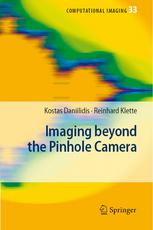

Most ebook files are in PDF format, so you can easily read them using various software such as Foxit Reader or directly on the Google Chrome browser.
Some ebook files are released by publishers in other formats such as .awz, .mobi, .epub, .fb2, etc. You may need to install specific software to read these formats on mobile/PC, such as Calibre.
Please read the tutorial at this link: https://ebookbell.com/faq
We offer FREE conversion to the popular formats you request; however, this may take some time. Therefore, right after payment, please email us, and we will try to provide the service as quickly as possible.
For some exceptional file formats or broken links (if any), please refrain from opening any disputes. Instead, email us first, and we will try to assist within a maximum of 6 hours.
EbookBell Team

5.0
90 reviewsThe camera obscura, the basic projection model for pinhole cameras, was known in China more than 2500 years ago. The world's first photograph was taken in 1826 using a pinhole camera - a camera obscura fitted with a plate of photo-sensitive coated glass. All cameras since this first photograph follow the basic pinhole camera principle.
This book traces progress in photography, such as optical lenses and silver-based film, the latter replaced today by digital technologies. The authors review the design innovations such as photogrammetry, image data streams created by capturing images line by line, and omnidirectional vision for robotic navigation. The text shows how alternative camera architectures create a need to understand related projective geometries for the purpose of camera calibration, binocular stereo, static or dynamic scene understanding. The text also explores applications of alternative camera architectures.
Written by leading researchers in the field, this book elucidates on these topics as well as some of the applications of alternative camera architectures.